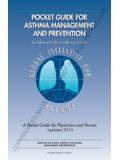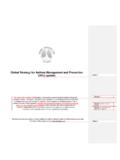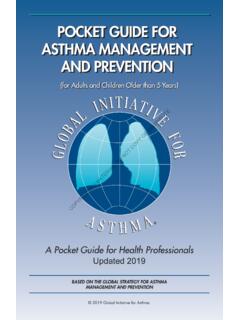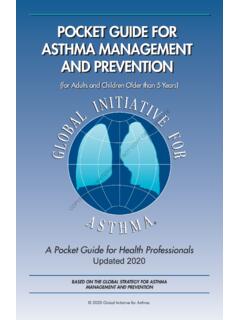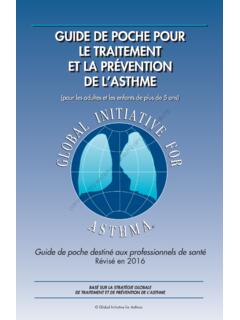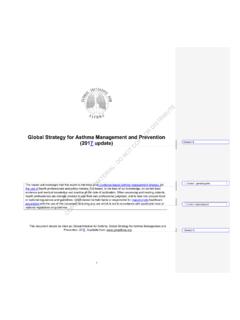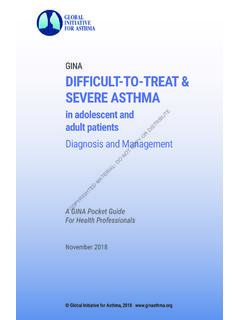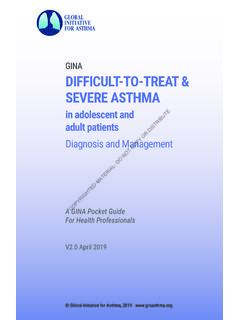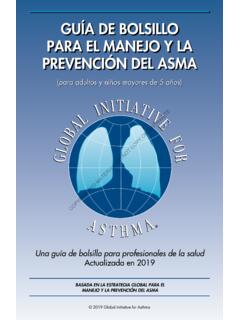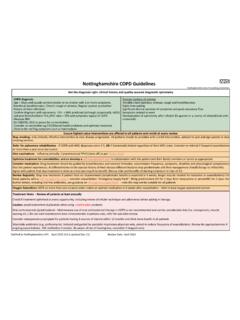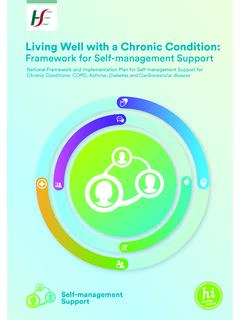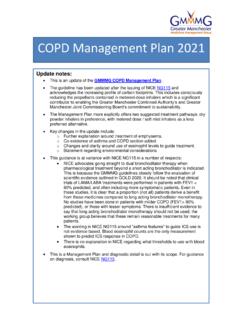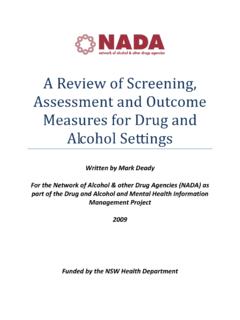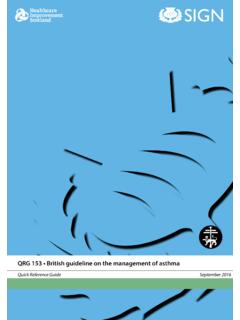Transcription of DISTRIBUTE OR NOT DO COPYRIGHTED
1 global strategy FORASTHMA management AND PREVENTIONU pdated 20199 COPYRIGHTED MATERIAL- DO NOT COPY OR DISTRIBUTE 1 global strategy for asthma management and prevention (2019 update) The reader acknowledges that this report is intended as an evidence-based asthma management strategy , for the use of health professionals and policy-makers. It is based, to the best of our knowledge, on current best evidence and medical knowledge and practice at the date of publication. When assessing and treating patients, health professionals are strongly advised to use their own professional judgment, and to take into account local or national regulations and guidelines. GINA cannot be held liable or responsible for inappropriate healthcare associated with the use of this document, including any use which is not in accordance with applicable local or national regulations or guidelines.
2 This document should be cited as: global Initiative for asthma . global strategy for asthma management and prevention , 2019. Available from: COPYRIGHTED MATERIAL- DO NOT COPY OR DISTRIBUTE 2 Table of contents Tables and figures .. 5 Preface .. 7 Members of GINA committees (2018) .. 8 9 What s new in GINA 2019? .. 12 Peer-reviewed publications about the GINA report .. 14 SECTION 1. ADULTS, ADOLESCENTS AND CHILDREN 6 YEARS AND OLDER .. 15 Chapter 1. Definition, description, and diagnosis of asthma .. 15 Definition of asthma .. 16 Description of asthma .. 16 Making the initial diagnosis .. 17 Confirming the diagnosis of asthma in patients already taking controller treatment .. 22 Differential diagnosis.
3 24 How to make the diagnosis of asthma in other contexts .. 25 Chapter 2. Assessment of asthma .. 27 Overview .. 28 Assessing asthma symptom control .. 29 Assessing future risk of adverse outcomes .. 33 Role of lung function in assessing asthma 33 Assessing asthma severity .. 35 Chapter 3. Treating asthma to control symptoms and minimize risk .. 37 Part A. General principles of asthma management .. 38 Long-term goals of asthma management .. 38 The patient-health care provider partnership .. 39 Control-based asthma 40 Part B. Medications and strategies for symptom control and risk reduction .. 43 asthma medications .. 44 Reviewing response and adjusting treatment .. 54 Treating other modifiable risk factors.
4 57 Other therapies .. 58 Non-pharmacological strategies .. 60 Indications for referral for expert advice .. 68 Part C. Guided asthma self- management education and skills training .. 69 Overview .. 69 Skills training for effective use of inhaler devices .. 69 COPYRIGHTED MATERIAL- DO NOT COPY OR DISTRIBUTE 3 Adherence with medications and other advice .. 70 asthma information .. 72 Training in guided asthma self- management .. 73 Part D. Managing asthma with comorbidities and in specific populations .. 75 Managing comorbidities .. 75 Managing asthma in specific populations or settings .. 78 Part E. Difficult-to-treat and severe asthma in adults and adolescents .. 84 Definitions: uncontrolled, difficult-to-treat and severe asthma .
5 84 Prevalence: how many people have severe asthma ? .. 85 Importance: the impact of severe asthma .. 85 Investigate and manage adult and adolescent patients with difficult-to-treat asthma .. 91 Assess and treat severe asthma phenotypes .. 93 Manage and monitor severe asthma treatment .. 98 Chapter 4. management of worsening asthma and exacerbations .. 101 Overview .. 103 Diagnosis of exacerbations .. 104 Self- management of exacerbations with a written asthma action plan .. 104 management of asthma exacerbations in primary 108 management of asthma exacerbations in the emergency department .. 111 Chapter 5. Diagnosis and initial treatment of asthma , COPD and asthma -COPD overlap (ACO) .. 119 Objective .. 120 Background to diagnosing asthma , COPD and asthma -COPD overlap.
6 121 Definitions .. 121 Stepwise approach to diagnosis of patients with respiratory symptoms .. 122 Future research .. 128 SECTION 2. CHILDREN 5 YEARS AND YOUNGER .. 129 Chapter 6. Diagnosis and management of asthma in children 5 years and 129 Part A. Diagnosis .. 130 asthma and wheezing in young children .. 130 Clinical diagnosis of asthma .. 131 Tests to assist in diagnosis .. 134 Differential diagnosis .. 135 Part B. Assessment and management .. 137 Goals of asthma management .. 137 Assessment of asthma .. 137 Medications for symptom control and risk reduction .. 139 COPYRIGHTED MATERIAL- DO NOT COPY OR DISTRIBUTE 4 Reviewing response and adjusting treatment .. 144 Choice of inhaler device .. 144 asthma self- management education for carers of young children.
7 145 Part C. management of worsening asthma and exacerbations in children 5 years and younger .. 146 Diagnosis of exacerbations .. 146 Initial home management of asthma exacerbations .. 147 Primary care or hospital management of acute asthma 149 Chapter 7. Primary prevention of asthma .. 153 Factors contributing to the development of asthma in children .. 154 Factors associated with increased or decreased risk of asthma in 154 Advice about primary prevention of asthma .. 157 SECTION 3. TRANSLATION INTO CLINICAL PRACTICE .. 159 Chapter 8. Implementing asthma management strategies into health systems .. 159 Introduction .. 160 Adapting and implementing asthma clinical practice guidelines .. 160 Barriers and facilitators.
8 162 Examples of high impact implementation interventions .. 162 Evaluation of the implementation process .. 162 How can GINA help with implementation? .. 163 REFERENCES .. 164 COPYRIGHTED MATERIAL- DO NOT COPY OR DISTRIBUTE 5 Tables and figures DIAGNOSIS Box 1-1. Diagnostic flowchart for clinical practice initial presentation .. 18 Box 1-2. Diagnostic criteria for asthma in adults, adolescents, and children 6 11 years .. 19 Box 1-3. Steps for confirming the diagnosis of asthma in a patient already taking controller treatment .. 23 Box 1-4. How to step down controller treatment to help confirm the diagnosis of asthma .. 23 Box 1-5. Differential diagnosis of asthma in adults, adolescents and children 6 11 years.
9 24 ASSESSMENT Box 2-1. Assessment of asthma in adults, adolescents, and children 6 11 years .. 29 Box 2-2. GINA assessment of asthma control in adults, adolescents and children 6 11 years .. 31 Box 2-3. Specific questions for assessment of asthma in children 6 11 years .. 32 Box 2-4. Investigating a patient with poor symptom control and/or exacerbations despite treatment .. 36 management Box 3-1. Communication strategies for health care providers .. 39 Box 3-2. The control-based asthma management cycle .. 40 Box 3-3. Population level versus patient level decisions about asthma treatment .. 42 Box 3-4. Initial asthma treatment - recommended options for adults and adolescents .. 45 Box 3-5A. Personalized management for adults and adolescents to control symptoms and minimize future risk.
10 46 Box 3-5B. Personalized management for children 6-11 years to control symptoms and minimize future risk .. 47 Box 3-6. Low, medium and high daily doses of inhaled corticosteroids .. 48 Box 3-7. Options for stepping down treatment once asthma is well controlled .. 56 Box 3-8. Treating modifiable risk factors to reduce exacerbations .. 57 Box 3-9. Non-pharmacological interventions - summary .. 60 Box 3-10. Effectiveness of avoidance measures for indoor allergens .. 64 Box 3-11. Indications for considering referral for expert advice, where available .. 68 Box 3-12. Strategies to ensure effective use of inhaler 70 Box 3-13. Poor medication adherence in asthma .. 71 Box 3-14. asthma information .. 72 Box 3-15. What proportion of adults have difficult-to-treat or severe asthma ?
